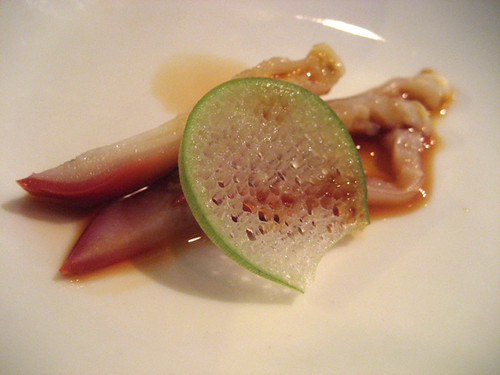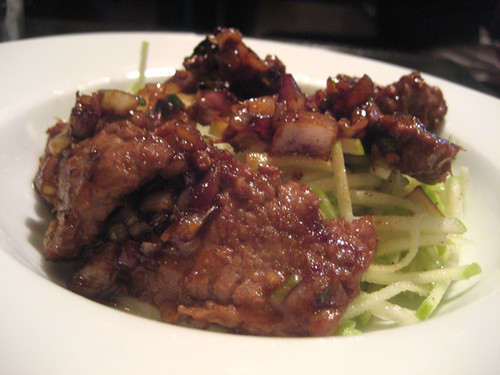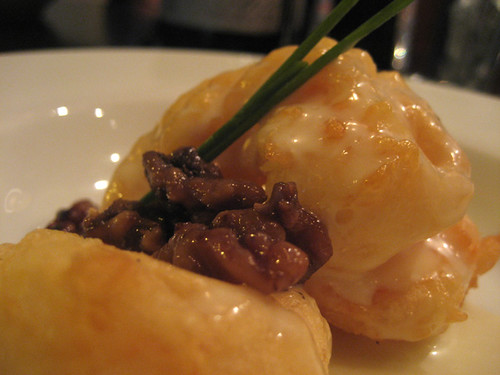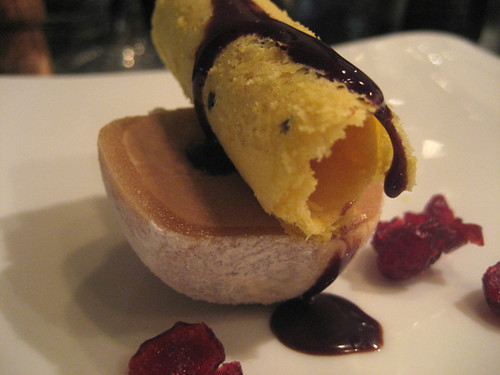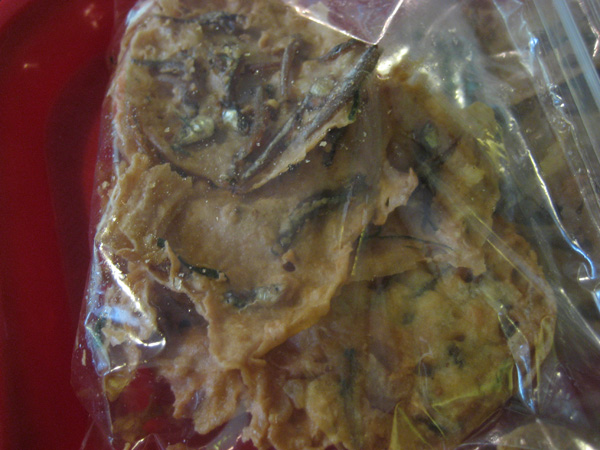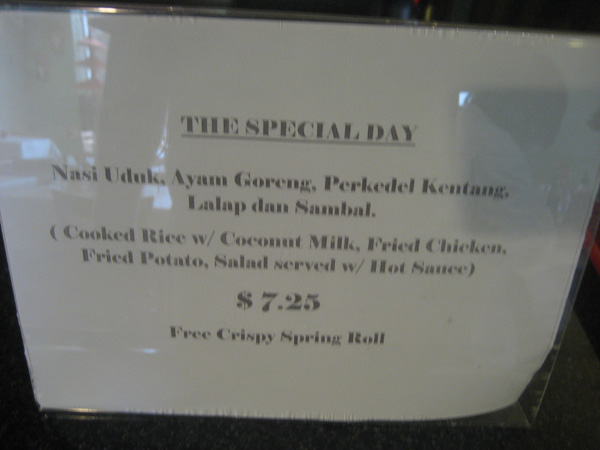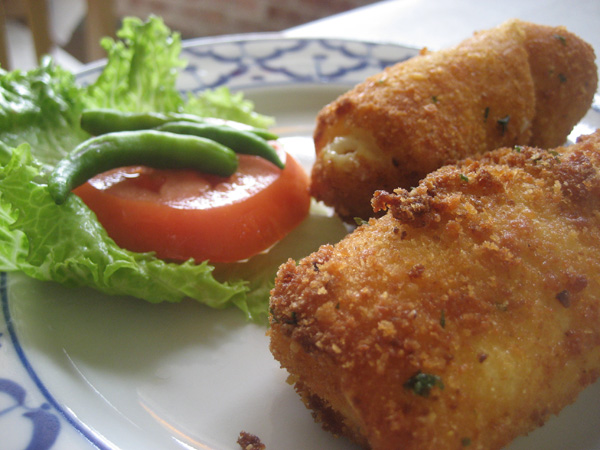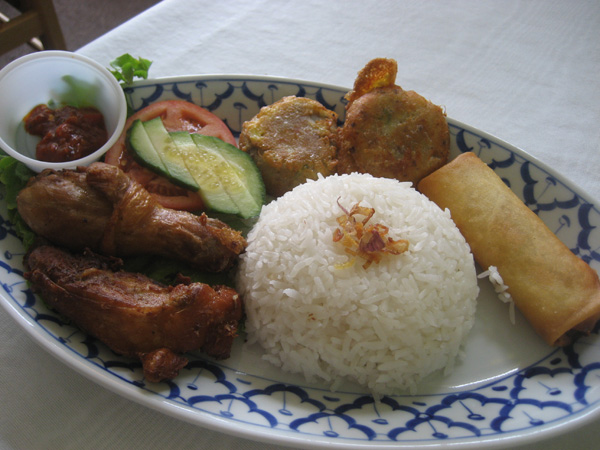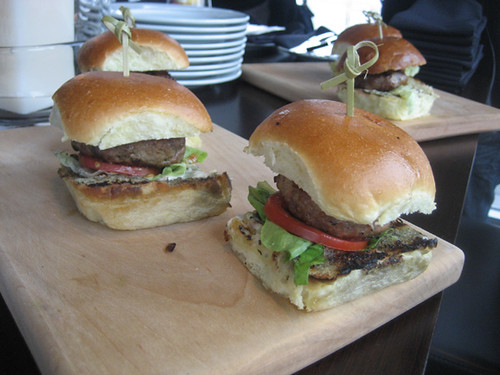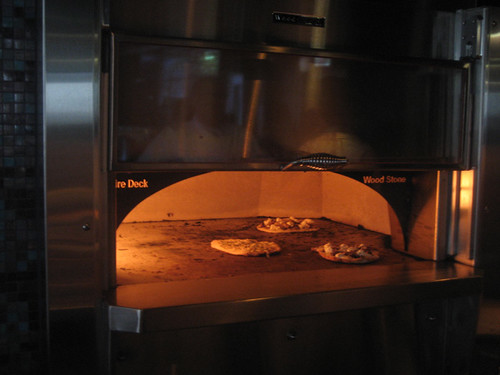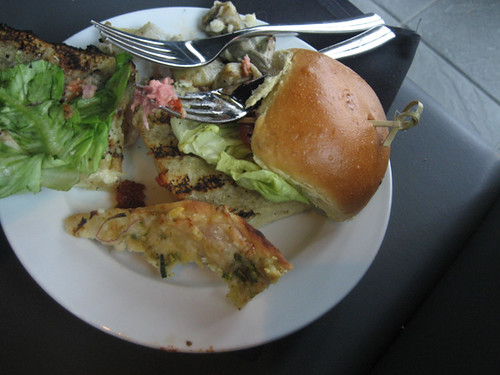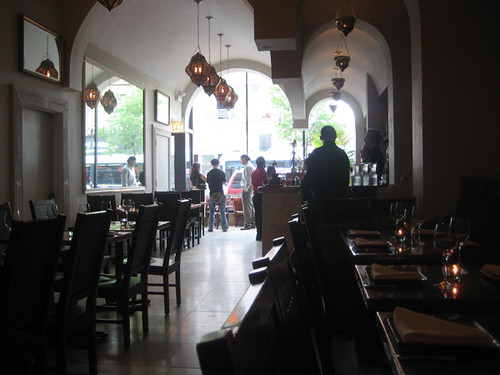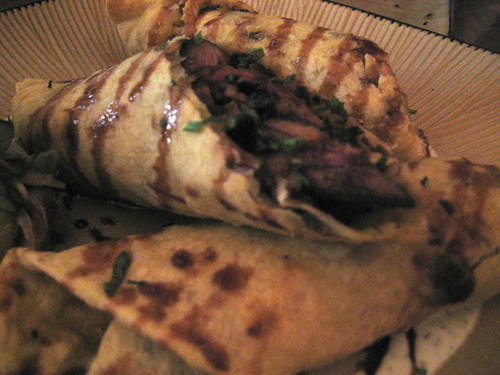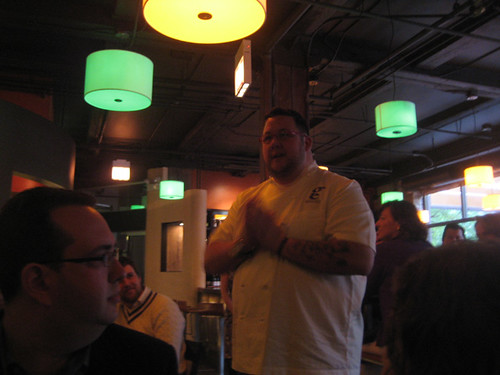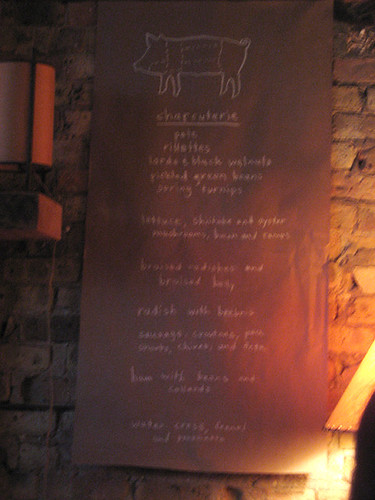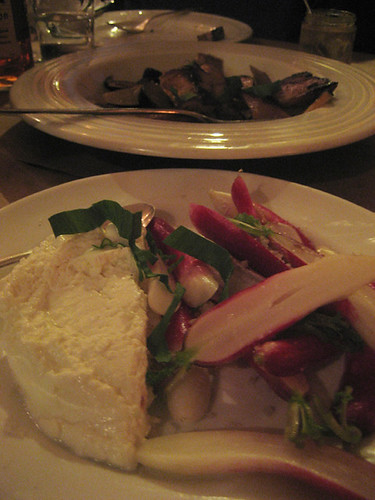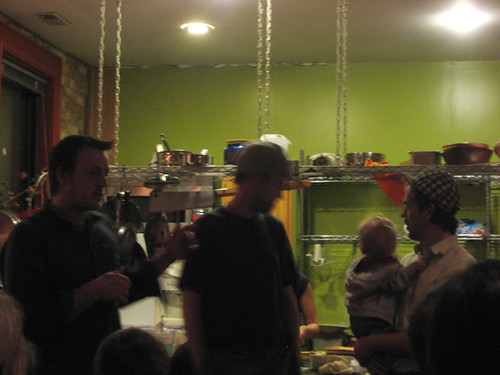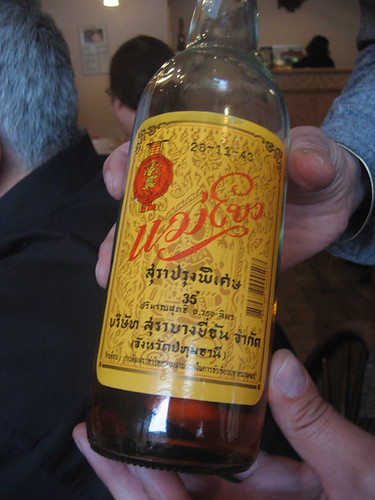
Back in the day, the cutting edge of foodiedom at Chowhound and, subsequently, LTHForum was the discovery and popularization of so-called secret menus at Asian, especially Thai, restaurants.
They weren’t so much secret in the sense of something exclusive, as they were menus of the foods the restaurants served their own countrymen, but felt us gringos would not be willing to accept, due to unusual ingredients and authentically strong and spicy flavors. Slowly we were able to convince certain restaurants that non-Thais (or non-Chinese or whatever) would enjoy these foods and, even more importantly, not send them back without paying for them.
I say “we,” and that’s not entirely inaccurate since the numbers of folks who came into restaurants like Spoon Thai, TAC Quick and Sticky Rice ordering and enjoying these dishes was an important part of convincing these restaurateurs to serve their food the way they eat it, without fear of having to comp a lot of dinners to offended gringos. But the heavy lifting was done by Erik M., who learned Thai to be able to translate Thai menus and provided these translations to a number of restaurants. His efforts paid off for dozens, maybe even hundreds of diners who took the download menus into restaurants and had food that completely turned their idea of Thai food around, offering at least a glimpse of the true depth and complexity of one of the world’s great cuisines, but one too often dumbed down and sugared up in America.
Erik has been in L.A. more than not lately, but recently he arranged a dinner at Spoon devoted to Thai drinking food, which like drinking food the world over fell into two main categories— salty spicy meats and nuts to get the palate ready for alcohol, and comfy carbs to soak up some of that alchohol. Any resemblance to American drinking foods pretty much ends there, however, as you’ll see. It was a fascinating introduction to a whole range of new dishes that took my appreciation of a favorite restaurant to a new level, and while a few were pretty much one-offs prepared as a courtesy for Erik, most are either available at the restaurant regularly or could be arranged with a few days’ notice. So if you see something you like, try to order it, and help encourage one of Chicago’s best ethnic restaurants to add these outstanding and eye-opening flavors to the “secret” items which, in reality, need not be a secret to anyone who makes the effort to know about them.

Poo pia thawt—These are available if you make it clear you want the “little eggrolls”—filled with peppery ground meat, they were much more delectable and addictive than the usual big sloppy eggroll.

I thought this was garnishes at first, but it’s actually a tasty and charming salad— put a little of everything (including the dried shrimp in the back) in a carrot cup and munch away.
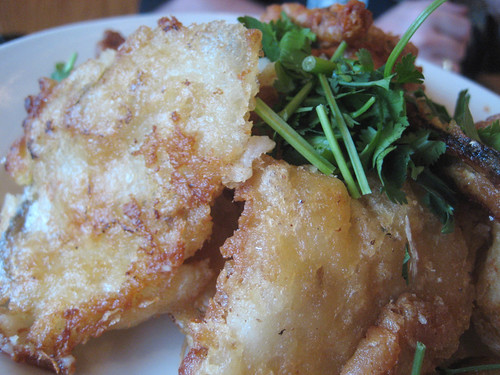
Hawy thawt—Fried mussels, “greasy on purpose” Erik says; I liked them this way a lot better than the big mussel pancake you can get here and at other Thai restaurants.

Naem sii-khrong muu—Fried ribs, first marinated in a sour (naem) powder. You would be happy to see these at any bar on earth; we were very happy to see an extra plate arrive as an encore at the end of our meal.
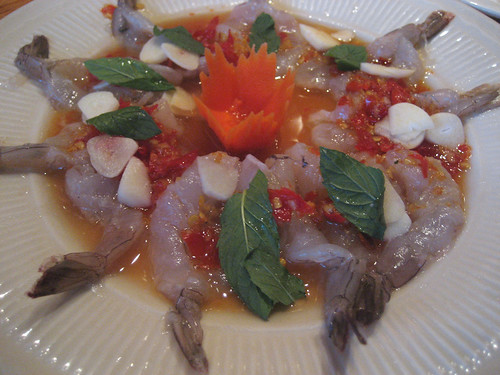
Kung chae naam plaa—marinated (uncooked) shrimp. I’ve had these before, either at Spoon or its downtown sibling Silver Spoon, and while the floppy uncooked shrimp is not my favorite texture, the garlicky, hot marinade is one of those perfect balances of pungent flavors that Thais seem to pull off better than anybody on earth.

Neua taet diaw—If I had to recommend one thing to go have right now, this Thai beef jerky would be it, hands down. Beef, marinated in soy sauce and spices and both dried and deep fried, with the same tamarind-sweet/chile-hot dipping sauce (naam jiim jaew) as Thai fried chicken (which we also had, later, by the way, but no picture). Every other beef jerky is this beef jerky’s bitch, it’s really a marvel (and it’s on the menu, so you could have it tonight!).
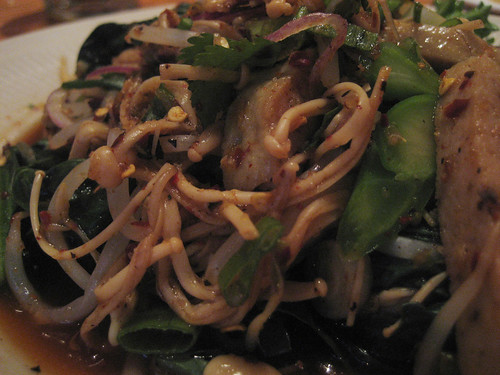
Kao-lao muu yaw—I seemed to be one of the few dissenters who wasn’t wild about this salad with enoki mushrooms and a Vietnamese-style pork loaf which was sort of mortadella-like.
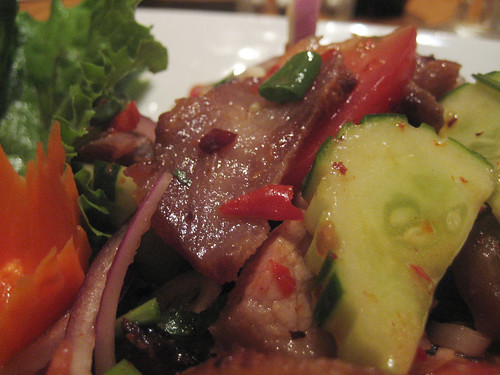
Yam khaw muu yaang kap taeng kwaa—Grilled pork neck in a salad with cucumbers, but unlike the fresh grilled pork neck served at TAC Quick (which is a great dish), this was more like bacon, fried before grilling and unctuously fatty. This was sort of engineered to Erik’s specs, as he says, “if you want the exact version, you should be clear about two things: a) request that the pork be “soft,” and b) request the addition of cucumber. It’s listed on the menu with cucumber, but most Thais order this without even looking at the menu, and they just ask for “yam khaw muu yaang,” which doesn’t have the cuke, tomato, etc.”
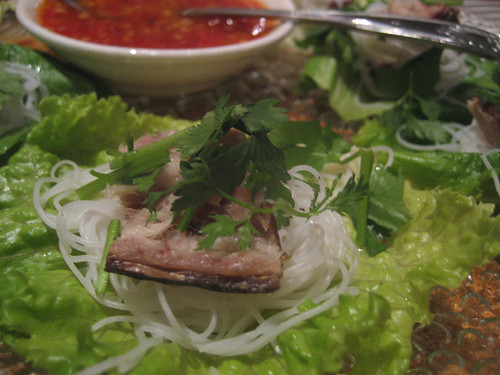
Miang plaa thuu—a one-bite salad with grilled mackerel and steamed rice noodles. I might try a different version with a different meat, if there is such a thing.

Yam mama—Now here’s serious drunken-comfort food—supermarket ramen noodles (“Mama” brand) with minced pork. Erik basically said this was like white trash Thai food, but it was aimed dead-on at the palate of people who’d been drinking for a few hours, and impossible not to like.

Naem khao tawt—this is an older Erik discovery that we’ve long had in our standard order at Spoon (although he says Thai Avenue’s is better), though I think it’s gotten hotter over the years and we need to start ordering it mild (at least for my wife to enjoy it). The pink stuff is some pressed ham product, but what this dish is really about is crunchy bits of fried rice in lots of lime juice, a wonderful combination that makes this probably one of my last-meal dishes (hope the prison cooks include at least one Thai con).
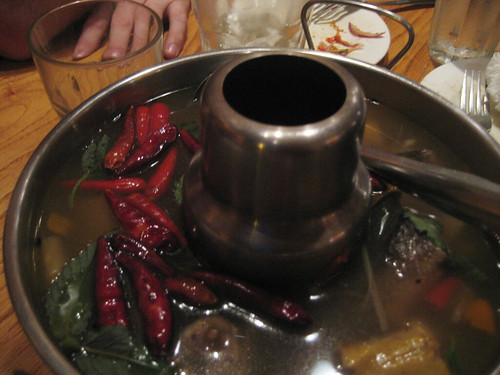
Tom pret plaa lai—”Hungry ghost soup” (i.e., good enough to make even the dead hungry), with eel and a fearsome amount of chiles floating in it. The eel was so-so, fishy in a not entirely pleasant way (and I, unlike a lot of people, have no weirdness about eating eel), but the broth—sour and pungent and subtly incandescent—was quite wonderful.
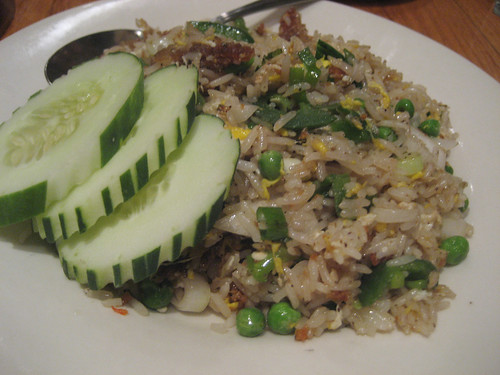
We ended with three variations on comfort foody fried rice dishes—khao phat kha-naa plaa khem (fried rice with Chinese broccoli and salty fish), khao phat plaa salid (fried rice with Gouramy fish), which was made by the great crispy and fishy fish, and best of all khao phat naam phrik kapi (fried rice with shrimp paste and Thai mackerel), given depth the others lacked by shrimp paste. Also, someone had brought Erik a condiment for fried rice from Thailand, which was like sweet-salty dried shrimp crispies and definitely enhanced the milder versions.
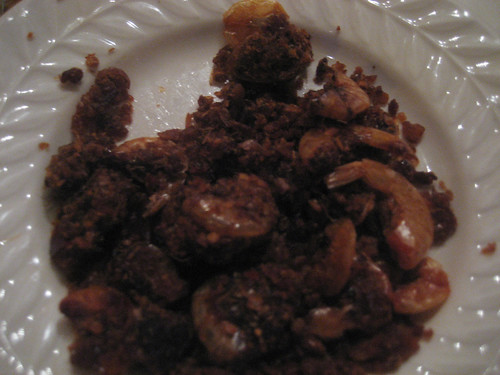
Thanks to Erik and to Spoon Thai for revealing another fascinating side of this great cuisine.
Spoon Thai
4608 N. Western Ave.
Chicago, IL 60625
(773) 769 – 1173


 Posted in
Posted in 
